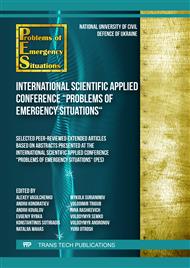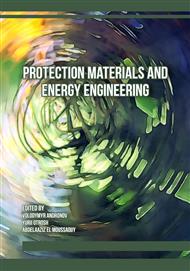p.73
p.97
p.111
p.125
p.135
p.145
p.157
p.167
p.177
The Possibility of Using 1301 and 2402 Mixtures of Halons for Fire Extinguishing Purposes
Abstract:
Halons are usually used for fire extinguishing where other types of extinguishing agents cannot be used. Their use does not require disconnection of electrical networks, does not lead to any damage, and after airing the premises, these substances do not leave any residues. Halons are used as flame retardants in concentrations (from 2 to 12% vol.). In the case of their use, a decrease in the oxygen content in the air of the flame center’s due to dilution is not significant, and extinguishing occurs as a result of the slowing down and interruption of chain chemical reactions in the flame. Combustion inhibitors play the role of a "negative catalyst", the mechanism of their action consists in high reactivity to interact with radicals with the formation of inert compounds, thereby interrupting the chain reaction of combustion and slowing down its development. The concentrations of bromotrifluoromethane (halon 1301) and 1,2-dibromotetrafluoroethane (halon 2402) in the mixtures were determined by the gas chromatographic method, and experimental researches for determining the minimum fire-extinguishing concentration established that the halons 1301 and 2402 mixtures show high efficiency in extinguishing flames. Established, that the mixture of halons 1301 and 2402 with the concentration of the latter in the range of 60÷65% exhibits the best minimum fire-extinguishing concentration. At these values, the minimum fire-extinguishing concentration did not exceed 2.0% vol. It was determined that when reducing the concentration of oxygen in the air by halon 1301 from 20.5 to 19% of volume, the concentration of halon 2402 for extinguishing n-heptane decreases by 2.5 times. Inhibition of the n-heptane flame combustion process by such mixtures of halons is associated with the decomposition of halons under the influence of temperature with the absorption of heat and releasing of combustion inhibitors, a change in the direction of decomposition towards the formation of non-combustible gases and the cessation of oxygen access. This indicates possibility of using available gas extinguishing substances - halons - for fire extinguishing.
Info:
Periodical:
Pages:
135-144
Citation:
Online since:
August 2023
Authors:
Price:
Сopyright:
© 2023 Trans Tech Publications Ltd. All Rights Reserved
Share:
Citation:



